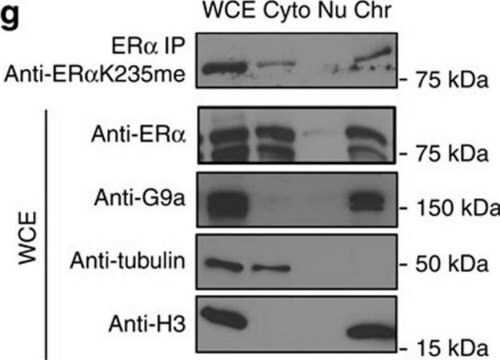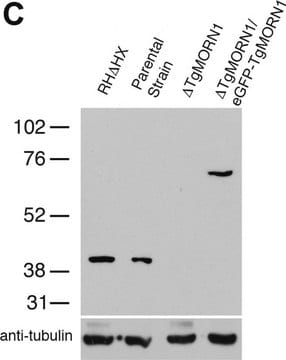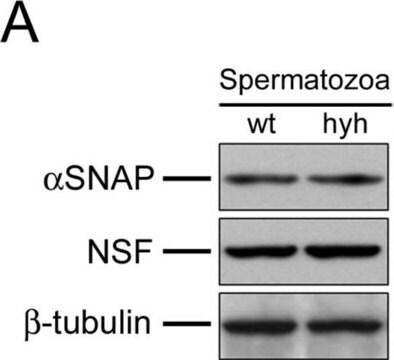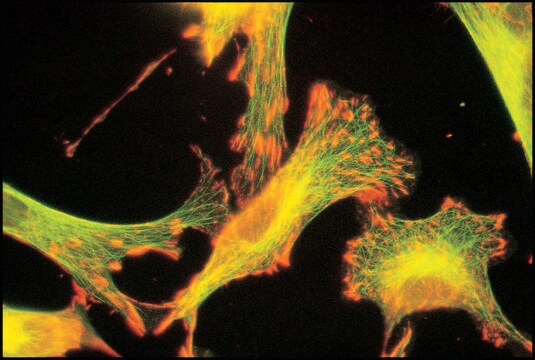Kluczowe dokumenty
T7816
Monoclonal Anti-β-Tubulin I antibody produced in mouse
clone SAP.4G5, ascites fluid
Synonim(y):
Anti-CDCBM6, Anti-CSCSC1, Anti-M40, Anti-OK/SW-cl.56, Anti-TUBB1, Anti-TUBB5
About This Item
Polecane produkty
pochodzenie biologiczne
mouse
Poziom jakości
białko sprzężone
unconjugated
forma przeciwciała
ascites fluid
rodzaj przeciwciała
primary antibodies
klon
SAP.4G5, monoclonal
masa cząsteczkowa
antigen ~55 kDa
reaktywność gatunkowa
Xenopus, chicken, human, hamster, canine, mouse, bovine, rat
metody
immunocytochemistry: suitable
immunohistochemistry (formalin-fixed, paraffin-embedded sections): suitable
indirect ELISA: suitable
microarray: suitable
western blot: 1:20,000 using cultured chicken fibroblasts
izotyp
IgG1
numer dostępu UniProt
Warunki transportu
dry ice
temp. przechowywania
−20°C
docelowa modyfikacja potranslacyjna
unmodified
informacje o genach
human ... TUBB(203068)
mouse ... Tubb4(22153)
Powiązane kategorie
Opis ogólny
Specyficzność
Immunogen
Zastosowanie
Oświadczenie o zrzeczeniu się odpowiedzialności
Nie możesz znaleźć właściwego produktu?
Wypróbuj nasz Narzędzie selektora produktów.
polecane
Kod klasy składowania
10 - Combustible liquids
Klasa zagrożenia wodnego (WGK)
nwg
Temperatura zapłonu (°F)
Not applicable
Temperatura zapłonu (°C)
Not applicable
Wybierz jedną z najnowszych wersji:
Masz już ten produkt?
Dokumenty związane z niedawno zakupionymi produktami zostały zamieszczone w Bibliotece dokumentów.
Klienci oglądali również te produkty
Produkty
Microtubules of the eukaryotic cytoskeleton are composed of a heterodimer of α- and β-tubulin. In addition to α-and β-tubulin, several other tubulins have been identified, bringing the number of distinct tubulin classes to seven.
Nasz zespół naukowców ma doświadczenie we wszystkich obszarach badań, w tym w naukach przyrodniczych, materiałoznawstwie, syntezie chemicznej, chromatografii, analityce i wielu innych dziedzinach.
Skontaktuj się z zespołem ds. pomocy technicznej











